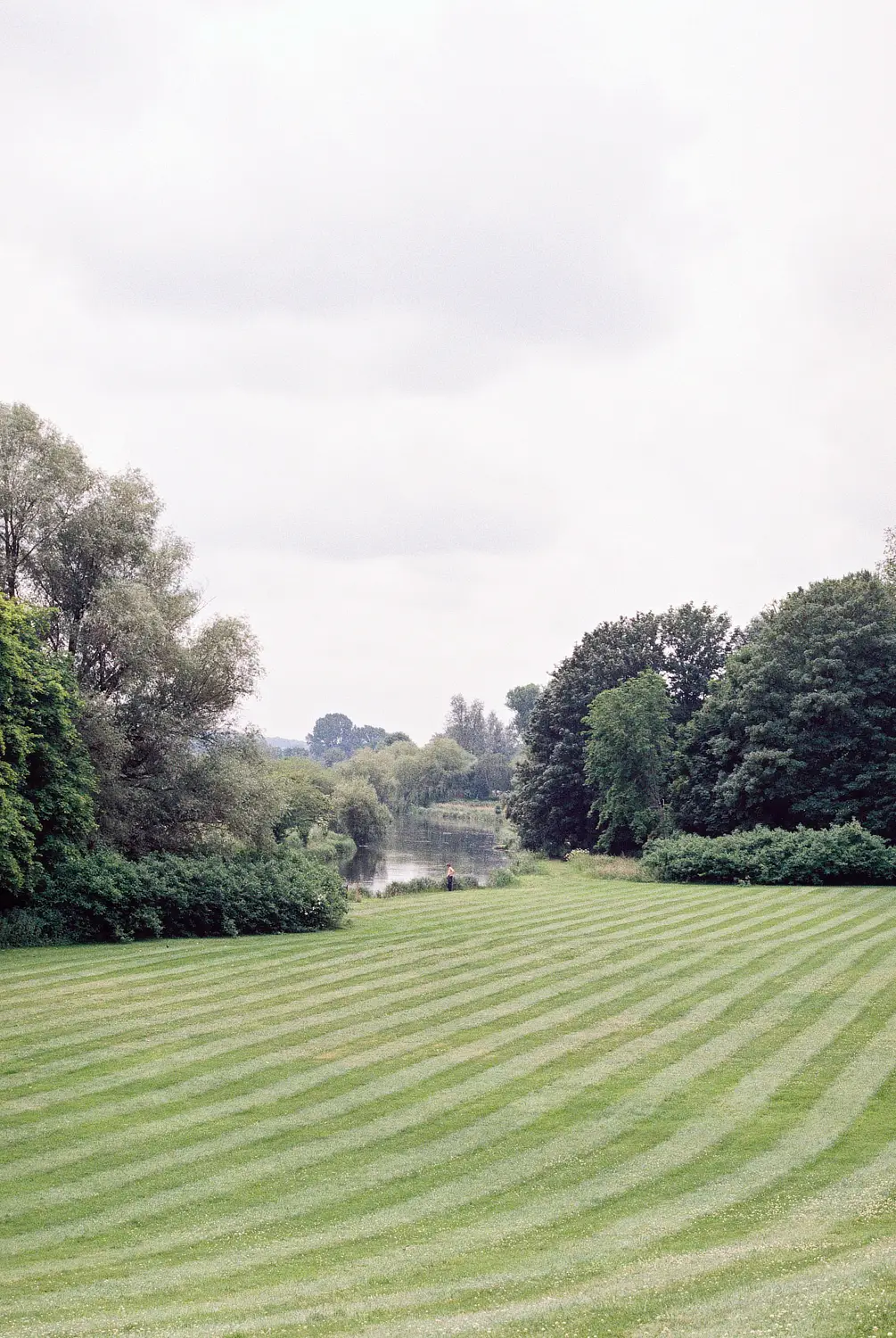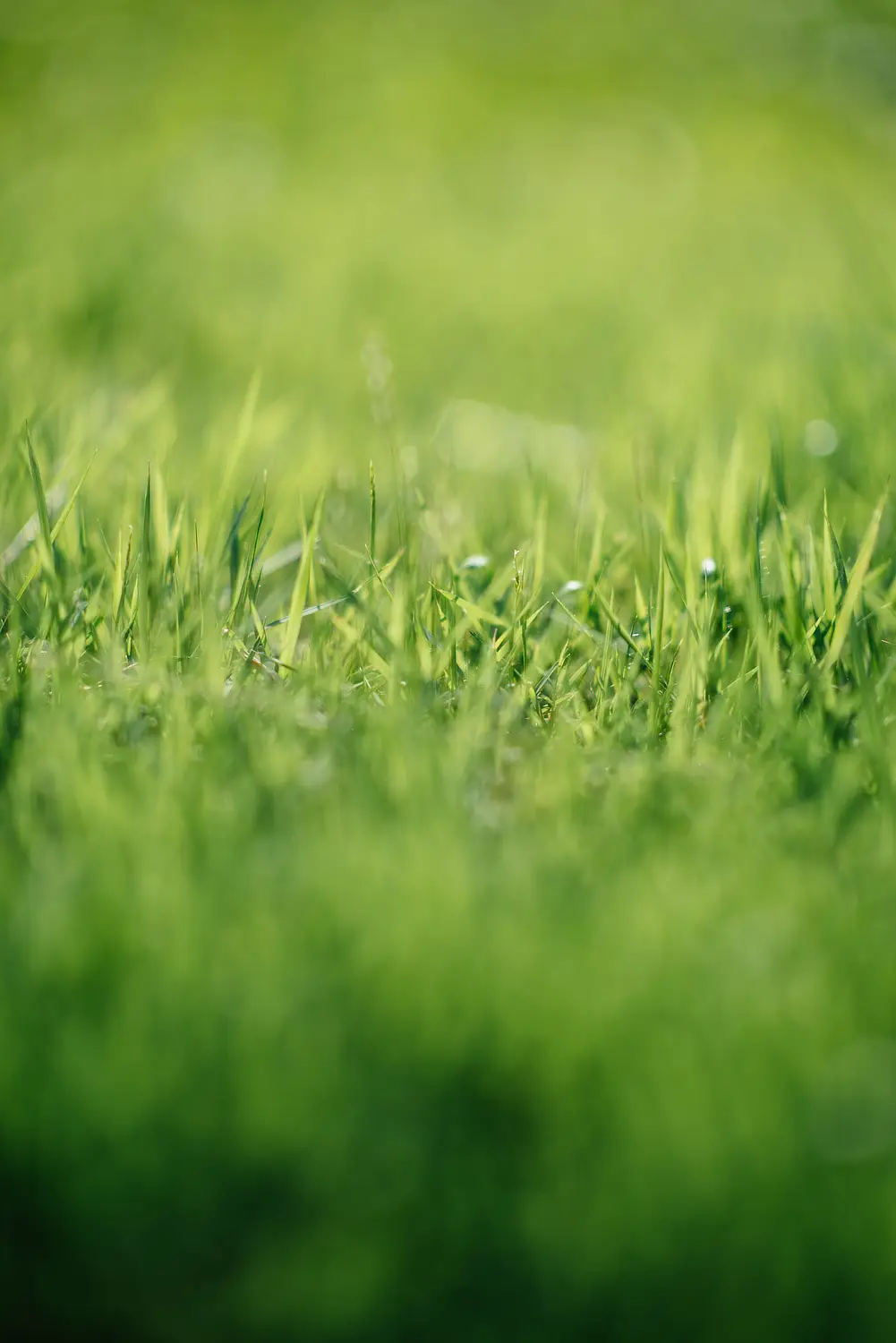One of my first ever jobs in garden maintenance was mowing and striping a beautiful lawn in the west country of England. I was, quite uncontrollably, pulled behind a huge cylinder mower trying my best to keep it straight and true to create stunning green lines in the lawn. The effect was actually more like a Dr. Suess story with the lines wiggling all over the place! I did however get better at it and the effect got more and more formal as I practiced more. If you are thinking about getting into a little lawn artistry it’s not as hard as you might think.
A lawn with a finer leaf such as a couch or Zoysia will show much more striping than a broad leaf buffalo will but the effect should work on every type of lawn. Before you get started you need a healthy, thick, and lush lawn as this will be able to show better stripes and patterns than a thin and sparse one. I would be applying a lawn specific soil wetter to ensure the water is getting to the root zone of the turf. Some wetting agents might burn the leaf of the grass so make sure you get one that has been formulated for turf grass. Feeding your lawn seasonally to ensure it gets the nutrients it needs for growth is another great way to thicken it up and you must mow your lawn on a weekly basis to encourage sideways lateral growth rather than straight up to the sun.
Next thing to look at is your mower and irrelevant of the type of mower, the blades need to be sharp. Sharp mower blades will give you a crisp cleaner cut – the cleaner the cut the nicer the lawn will look. If you are using a cylinder mower you may need to look at back lapping to sharpen your blades (if you have a cylinder mower you are obviously a lawn fanatic who knows what this means!). For rotary mowers, like the majority of us have then you can either sharpen the blades with a file yourself, have a mower shop do this for you or remove them and replace them altogether.
You then need a bit of specific equipment to get your lawn to stripe – a heavy roller. Most cylinder mowers will have this inbuilt into the mower whereas rotary mowers will need a specific attachment, you can normally find them online if your local hardware or nursery doesn’t stock them. The heavy roller is dragged behind the mower and will bend the leaf of your grass. If the leaf is bent towards you, it will look darker and if the blades of grass are bent in the opposite direction it will appear lighter.
Now we are on to the fun part! Stripes, checkers, and crisscross’ are all really achievable patterns for the home lawn. To mow stripes, start off by mowing your first stripe along the edge of your lawn. When mowing your first line, try to mow as straight as possible as this will be used as a guide for the rest of your lawn. On your next line, mow in the opposite direction along the edge of where you have just gone over. Repeat this process and continue to change direction and as the heavy roller pushes the leaf blades down the lines will become apparent.
Once you are finished, if you really want to help get your stripes to stand out, do a few passes over the lawn (known as double cutting or triple cutting) to push the grass right down and give it a really high-quality cut. Repeatedly mowing your lawn in the same directions should also help make your stripes more vivid over time. Just be sure to mix your mowing directions up from time to time when you are not striping to ensure ruts don’t develop in your lawn.
To create checkers, you need to start by cutting a striped lawn, then change direction and cut it again on a 90-degree change of angle. If you started by going from right to left, then move the mower to cut up and down – this will give you that multi-dimensional look. A criss-cross pattern is achieved by starting to mow your striped lawn on a diagonal and this may take some practice as you need to make the longest run through the centre of the lawn fist, you may want to set up a string line to ensure you stay on track. Change the angle by 90 degrees again to get the checked look. It may take some getting used to and a whole lot of practice but nail it and your lawn will be the best looking on the street.


